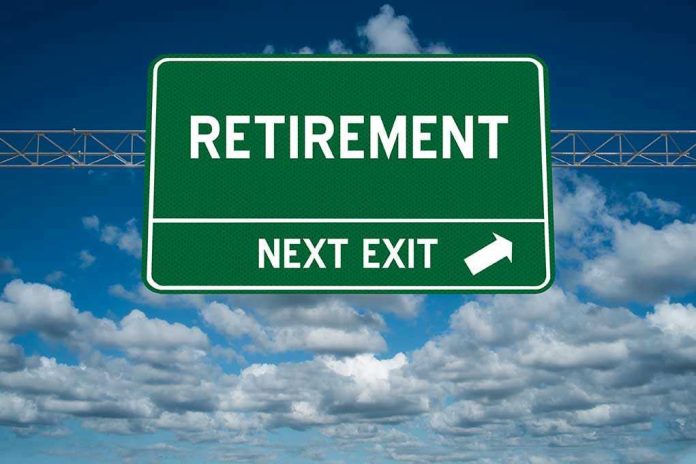
The secret to building a secure retirement might not be locked in a Wall Street vault—it could be quietly unfolding in your state legislature, reshaping how millions save for their golden years.
Story Snapshot
- 57 million Americans lack workplace retirement plans, leaving them financially vulnerable.
- States are rolling out auto-IRA programs to fill the savings gap for workers without access to 401(k)s.
- A new federal Saver’s Match could turbocharge savings for low- and moderate-income households starting in 2027.
- Older workers forced out of secure jobs face unique retirement challenges, but upcoming solutions may offer relief.
States Step In Where Employers Fall Short
Millions of American workers, especially those over 40, approach retirement with a sense of unease. The traditional 401(k) advantage is reserved for the fortunate—leaving 57 million without employer-sponsored plans, default contributions, or matching funds. For those forced out of secure full-time jobs, the stakes are even higher. Suddenly working part-time or piecing together gig work, these Americans face dwindling retirement prospects just when they need savings most. State governments, recognizing this looming crisis, are taking action by launching automated individual retirement account (auto-IRA) programs. These innovative plans mimic 401(k) auto-enrollment, diverting a portion of each paycheck into a state-approved IRA, helping workers save steadily even if their employer offers no retirement benefits.
Auto-IRAs are not one-size-fits-all. Seventeen states have rolled out programs with varying features, but the core principle remains: automatic enrollment raises participation rates and improves retirement readiness. Employees can opt out or adjust their contributions, granting flexibility. Unlike traditional 401(k)s, however, employers do not provide matching contributions, meaning the growth of these accounts depends largely on the worker’s own input. The absence of employer matches has been a criticism, but advocates point to the power of inertia—once contributions begin, most participants keep saving, and their future selves reap the rewards.
Federal Incentives: Saver’s Match Arriving in 2027
The landscape may shift dramatically in 2027 with the introduction of the federal Saver’s Match. Under the SECURE 2.0 legislation, eligible workers could receive a federal match of up to 50% on their retirement contributions, capped at $1,000 for individuals and $2,000 for couples filing jointly. The program targets those most in need—singles earning $35,000 or less and couples making $71,000 or less. As incomes rise above $20,500 for singles and $41,000 for couples, the benefit phases out. Pew’s research suggests the Saver’s Match could bolster the retirement security of millions, particularly low- and moderate-income households who often find saving most difficult. Interest spikes when matching funds are on the table, with survey data showing a leap from 84% to 94% in potential participation.
Despite the promise, uncertainty looms. Funding for the Saver’s Match could be subject to political winds, particularly as administrations change. Should support falter, states and workers may need to rely solely on auto-IRA programs, which, while helpful, cannot fully replicate the power of a matching contribution. Policymakers and advocates argue that federal and state efforts must work in tandem to avoid leaving vulnerable populations behind.
How Workers Can Maximize New Opportunities
For those eligible for auto-IRAs, participation is a straightforward decision. These accounts offer flexibility in investment choices and provide a disciplined savings mechanism. Workers who might qualify for the Saver’s Match should take proactive steps: file a federal tax return even if not otherwise required, and adjust contributions to ensure they receive the full federal match. Gig workers and those with multiple part-time jobs especially need to monitor their savings, as irregular income can make consistent contributions challenging. Financial experts recommend setting clear retirement goals and periodically reviewing account balances to stay on track, regardless of eligibility for matching incentives.
State-sponsored retirement programs are not a panacea, but they represent a crucial step toward broadening access and reducing reliance on government assistance in retirement. As the population ages and traditional employment models shift, these new initiatives may determine whether millions can retire with dignity or struggle to make ends meet. The next few years will be pivotal, as federal and state policies converge to shape the future of American retirement security.
Sources:
Kiplinger: Your State Wants to Help You Save for Retirement. Here’s How
Pew: Federal Saver’s Match Coming in 2027 Could Boost Automated Retirement Savings Programs
Georgetown University Center for Retirement Initiatives: State Retirement Initiatives
Kiplinger: Auto-IRAs—A Smart Boost to Your Retirement Strategy







